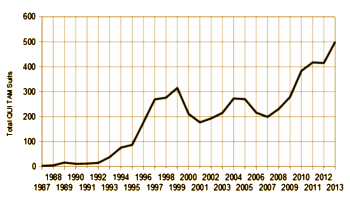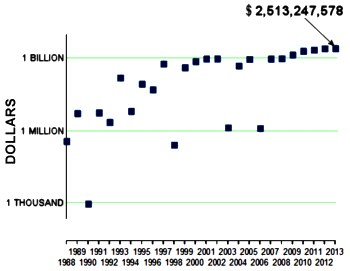In common law, a writ of qui tam is a writ whereby a private individual who assists a prosecution can receive all or part of any penalty imposed. Its name is an abbreviation of the Latin phrase qui tam pro domino rege quam pro se ipso in hac parte sequitur, meaning "[he] who sues in this matter for the king as well as for himself." The writ fell into disuse in England and Wales following the Common Informers Act 1951 but, as of 2010, remains current in the United States under the False Claims Act, 31 U.S.C. § 3729et seq., which allows a private individual, or "whistleblower," with knowledge of past or present fraud committed against the federal government to bring suit on its behalf.
from Wikipedia
Pharmagossip located a site with an interesting link [And they try to tell you Big Pharma’s Misdeeds Are All in the Past!]. It’s a link to a government report on QUI TAM [whistleblower] suits:
It’s pretty interesting stuff. Here are the numbers of QUI TAM suits successfully prosecuted from 1987 through 2013:

The amounts recovered through these suits rose so fast I had to use a log scale to even keep it on the page:

And these are just the whistleblower suits where the government was the defrauded party. There are plenty of other suits against PHARMA coming from other directions.
I suppose could look on these numbers in a favorable light. The whistlebowers are coming forward. The US is prosecuting the suits, retrieving lost revenue, punishing the bad guys. But there’s another way to see these numbers. It’s not working as a deterrent…
There is an interesting blog that documents how qui tam works. It is entitled “Solo Docs, So Long” and it provides a detailed analysis.
Thanks Mickey. If Big Pharma just adds the fines onto the drugs price as a “cost of doing business” then the patient is screwed. We need to see some Big Pharma execs in handcuffs/jail to act as a deterrent to the others.